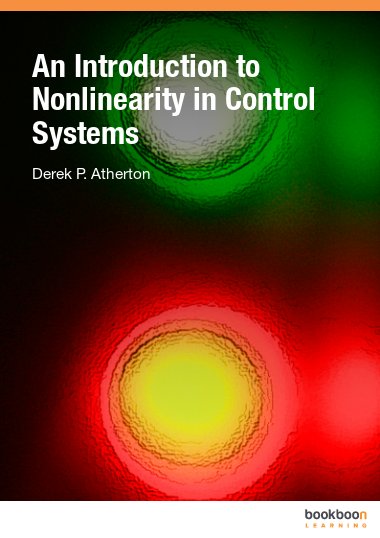The book is concerned with the effects of nonlinearity in feedback control systems and techniques which can be used to design feedback loops containing nonlinear elements. After a short introductory chapter on nonlinearity and its possible effects the use of phase plane methods for nonlinear second order systems is discussed. The next three chapters cover the describing function method and its applications in the determination of limit cycles, stability analysis and the prediction of unique nonlinear behaviour such as jump resonance and subharmonic generation. The following chapter shows using the Tsypkin approach how in feedback loops with a relay nonlinearity any limit cycles and their stability can be found exactly. Examples are given which cover some unique forms of limit cycles such as limit cycles with a sliding mode and multipulse limit cycles, which can be caused by resonant plant transfer functions. In recent years with the advent of microprocessor controllers there has been considerable interest in techniques for controller tuning based on limit cycle data and this is the topic covered in the next chapter. The analyses used make use of both the describing function method and the Tsypkin method presented in the previous chapters. The next topic covered is absolute stability methods for a nonlinear feedback loop with a single nonlinearity with emphasis placed on frequency domain methods to allow comparison with describing function results. The final chapter covers some methods for the design of nonlinear systems. The material is of an introductory nature but hopefully gives an overview and provides a basic understanding of various topics, many developed in recent years, and several of which have entire textbooks devoted to them.

الوصف
المحتوى
- Introduction
- What is nonlinearity?
- Forms of nonlinearity
- Structure and Behaviour
- Overview of contents
- References
- The Phase Plane Method
- Introduction
- Basic Principles
- The Phase Plane for Systems with Linear Segmented Nonlinearities
- Conclusions
- References
- Bibliography
- The Describing Function
- Introduction
- The Sinusoidal Describing Function
- Some Properties of the DF
- The Evaluation of some DFs
- Nonlinear Models and DFs
- Harmonic Outputs
- Sine plus Bias DF and the IDF
- Conclusions
- References
- Bibliography
- Appendix -Tables of Describing Functions
- Stability and Limit Cycles using th e DF
- Introduction
- Limit Cycle Evaluation
- Stability of a Predicted Limit Cycle
- DF Accuracy
- Some Examples of Limit Cycle Evaluation
- More than one Nonlinear Element
- Applications of SBOF to find Limit Cycles
- Conclusions
- Bibliography
- The SSDF and Harmonically Forced Systems
- Introduction
- The Cubic Nonlinearity with Two Sinusoidal Inputs
- Modified Nonllnearltles and the SSDF
- The IDF for Related Signals
- More Accurate Determination of Limit Cycles
- Closed Loop Frequency Response
- Jump Resonance
- Conclusions
- References
- Limit cycles in relay systems
- Introduction
- The Frequency Domain Approach
- Properties and Evaluation of A loci
- Solving for Limit Cycles
- Limit Cycle Stability
- Some Interesting Limit Cycle Problems
- Forced oscillations
- Conclusions
- References
- Appendix
- Controlle r Tuning from Relay Produ ced Limit Cycles
- Introduction
- Knowledge from the Limit Cycle
- Tuning the Controller
- Autotuning using the Relay in Parallel with the Controller
- Conclusions
- References
- Absolute Stability Results
- Introduction
- Lyapunov's Method
- Application of Lyapunov's Method
- Definitions and Loop Transformations
- Frequency Domain Criteria
- Examples
- Conclusions
- References
- Bibliography
- Design of Nonlinear Control Systems
- Introduction
- Linearization
- Frequency Response Shaping
- Nonlinear Compensation
- Compensation using DF Models
- Time Optimal Control
- Sliding Mode Control
- Fuzzy Logic
- Neural Networks
- Exact Linearization
- General Comments
- References